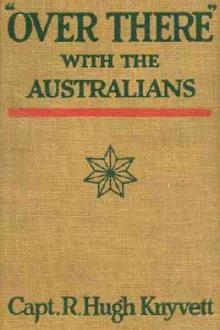Lohgarh - Khalsa Rajdhani, Lohgarh fort - Lohgarh Trust by S. Daljeet Singh Bajwa (books that read to you .TXT) 📕

- Author: S. Daljeet Singh Bajwa
Book online «Lohgarh - Khalsa Rajdhani, Lohgarh fort - Lohgarh Trust by S. Daljeet Singh Bajwa (books that read to you .TXT) 📕». Author S. Daljeet Singh Bajwa
Chapter 6
Mughal Action Against The Sikhs
At that time, Bahadur Shah, the Mughal Emperor, had been away to the south, to quell the rebellion of his brother Kam Bakhsh. Kam Bakhsh was finally defeated and killed on 2 January 1709, and, Bahadur Shah began his return journey to his capital on 19 January 1709. On 29 January, he reached ‘Talab Zakir Hussain’. Here, he appointed Khwaja Abdullah Dil Diler Khan as the Governor of Lahore and Jammu provinces and sent him a message to take charge.1
On 6 March 1709, he was near the city of Kamlapur. He was marching towards Delhi at a slow speed because he was in a relaxed mood after defeating and eliminating all of his enemies. He, having finished all his enemies, now, began behaving in an arrogant, aggressive and a peevish manner too. On March 6, he issued an order commanding that ‘except on the days of feasts, none other than Munaim Khan ‘Khan Khanan’, Zulfiqar Khan ‘Amir-Ul-Umra’, Chugatta Khan, Mahabat Khan, Shah Niwaz Khan and Hamid Khan, shall wear decorative turbans on his head.’ On March 13, he issued an order banning the use of palanquins for Hindus. It was declared that any Hindu found sitting in a palanquin2 would be arrested and imprisoned.
On 29 March, Bahadur Shah reached Maadri Nagar. Here, he sent a message to Asad Khan (Nawab Asif-ud-Daula Nizam-UL-Mulk) and Mohammed Amin Khan (Chain Bahadur), the chief of army in Moradabad, asking him to punish Raja Ajit Singh, the ruler of Marwar (Jodhpur), for his rebellious acts. Besides, Bahadur Shah himself decided to march towards Rajputana (now Rajasthan) to punish the rebel Rajput rulers, i.e. Raja Ajit Singh (Jodhpur), Jai Singh Swai (of Amber), Amar
Singh (of Udaipur). These Rajput rulers, had joined the Mughal Emperor in his campaign against his brother Kam Bakhsh, but had quietly left his company at Mandsor and returned to their capitals. After returning to their countries, they had killed the agents of the Mughal Emperor and declared complete independence.
On 21 August 1709 Bahadur Shah reached Samarda. Here, he issued orders appointing Mir Abdulla Salam (son of Qazi Kurban) as Kotwal (police chief) of Lahore. On the 23rd of August he appointed Ali Mardan Khan (Zabardast Khan) as the Governor of Kashmir. The same day he ordered that the number of the Hindu horsemen in the Mughal army should be reduced. On 12 October he appointed Altaf Khan as Bakhshi and Chief Reporter of Lahore Darbar.
Bahadur Shah Receives Reports of Sikh Victories
On 25 February 1710 Bahadur Shah reached Jamrauli town. Here, he received a letter from Wazir Khan, the Governor of Sarhind, reporting the victories of the Sikhs in some areas of Punjab. The letter said: “How shall I narrate the destruction caused by the Khalsa Sikhs in the Sarhind and the Punjab areas? They have destroyed very affluent Parganas. Today, I have received news that the pagans of Buria and Sadhaura have been captured and plundered. The government officials have been killed. The glorious Afghan families of Dahmala to have been killed.” After hearing the news, the Emperor wrote a letter to Nizam-UL-Mulk (Prime Minister) of Delhi to help Wazir Khan in suppressing the Sikhs’ rebellion.3 On 23 April, Bahadur Shah received a letter from Rustam Khan, from Lahore, mentioning: “Someone has declared himself Guru and has begun enrolling men (army) and creating riots.” At this Bahadur Shah sent orders to the army chiefs of Eimanabad and other areas around Lahore asking them to join the Governor of Lahore in punishing the
Sikhs.4
On 5 May 1710, Bahadur Shah reached Ajmer. Here, the ambassadors of the rulers of Jaipur, Jodhpur, Udaipur presented them before him and offered apologies on behalf of their chiefs.5 On May the 10th, on the mediation and the request of the prince Jahandar Shah,
Bahadur Shah forgave these three Rajput rulers, and, sent for them robes of honor. In fact, Bahadur Shah was so much worried about the situation of the Punjab that he did not want to take any action against the Rajputs; hence, he opted for a compromise with them.6
On 12 May 1710, Preet Rao, a messenger, reported to Bahadur Shah that “a Sikh has declared himself as Guru and has gathered several people around him and attacked even Saharanpur.” Hearing this, Bahadur Shah ordered the governors (of Sarhind, Lahore and Jammu) to take an immediate action against the Sikhs.7
On the same day, the agent of the ruler of Amber, in a letter to his master, wrote:
“The agent of the Governor of Sarhind has told me that we should not under-estimate the riots of this cult (the Sikhs). About seventy thousand persons (the Sikhs) have gathered at Sadhaura. They recite the name of Guru and also say that ‘a holy man has joined us from heavens’. (They) have destroyed the parganas of Doaba and have established their supremacy up to Fatehbad (Beas River). On receiving a letter from Wazir Khan, Nawab Nizam-Ul-Mulk Asad Khan has written to the Governor of Hissar to join him in his expedition against the Sikhs. But they too are awe-stricken. Let us see what the will of God is. Some people of this organisation have created a commotion in Lahore (zone) too. They have killed several of them and it is said that they have put siege to Saharanpur too...To sum up, the power of this cult is increasing day by day. Nawab Asif-ud-Daula has sent letters to Mohammed Amin Khan and Khan Durran Bahadur to immediately march against the Sikhs. They have told him (Nawab) that if he marches (against the Sikhs), they too would join him....As the situation is not undergoing any change, Nawab has decided to send Abdullah Khan (Khwaja) to discuss it with Wazir Khan. He has also written letters to the army chiefs of the surrounding areas asking them to ‘deliberate among themselves to deal with this cult (Sikhs)’. The Emperor too has told the army chiefs of the surrounding areas (to take action against the Sikhs). (The Emperor) has also ordered to grant twenty- five thousand aalat-i-nukra (silver coins) to Abdullah Khan and (has commanded) to grant fifty thousand rupees to Abdullah Khan (for his expedition against the Sikhs). Khan Sahib himself is passing through bad days, but he has accepted the order (of the Emperor) under compulsion”.8
(The non-Italic text is mine- Author).
On 20 May, 1710, when Bahadur Shah’s caravan stopped near Bahasu, he got the news of the occupation of Sarhind by the Sikhs.9 The Emperor was told that the Sikhs had killed Wazir Khan, the Governor of Sarhind, and his son or son-in-law also has either been killed or arrested. The informer told the Emperor that this news still needed confirmation.
On 24 May 1710, Bahadur Shah reached Toda. Here, he got confirmation of the fall of Sarhind to the Sikhs as well as the killing of Wazir Khan; Bahadur Shah immediately sent a letter to the officials at Shahjahanabad (Delhi) asking them to send eight lakh rupees to Khan Jahan, the Governor of Allahabad and Ubaid Khan (for the campaign against the Sikhs). He also sent Afzal Khan to Shahjahanabad to convey the orders of the Emperor to Khan Bahadur, Shamsher Khan, Chet Singh Kumaon, Anup Singh and Issa Khan lead forces against the Guru (Banda Singh).10 Banda Singh’s victories compelled Bahadur Shah to change his strategy. He realized that he could not fight on two fronts: the Rajputs and the Sikhs. So, he decided to make a deal with the Rajput rulers (as earlier said). He sent letters of ‘forgiveness’ to the three Rajput chiefs (Amber/Jaipur, Ajmer, and Jodhpur) and also granted them new rights and grants. He also sent them messages to join him in his crusade against the Sikhs. Besides, the Emperor announced that he himself would march
to the Punjab to lead the expedition against the Sikhs.
On 27 May 1710, Shafshikan Khan sent a request to Bahadur Shah, saying: “If Your Majesty grants me the Governorship of Sarhind, I shall crush that Guru who has created turbulence.” Bakhshi-Ul-Mulk Zulfikar Khan conveyed his request to the Emperor, but the latter did not accept his request.11
On 28 May, Bahadur Shah was told that the Guru (Banda Singh) had sent letters to the Rajput rulers Ajit Singh (of Jodhpur) and Jai Singh Swai (Amber/Jaipur) and they had sent their replies (to Banda Singh). Bahadur Shah also got the news that both of the Rajas had left Sambhar for Manoharpur.12 On June 5, at the request of Munaim Khan Khan Khanan, the Emperor sent Mahabat Khan (son of Munaim Khan) to
approach these Rajput rulers and assure them of his (Emperor’s) hand of friendship and bring them to his court.13
On 10 June, Bahadur Shah got the message that Mahabat Khan had succeeded in his mission and the Rajput rulers were on their way to see the Emperor. The terrified Bahadur Shah asked his minister to march towards the route of their journey, grant them warm welcome and escort them honorably to his presence. The same day Bahadur Shah dispatched orders to the Lahore officials asking them to grant three thousand rupees to Mohammed Taqi, the nephew of Wazir Khan, as travel expenses and ask him to present himself before him (Emperor). Bahadur Shah also got the news that the officials of the estate of Bakhshi Shah Niwaz were so scared of the Sikhs that they had fled from their territory. There was great awe in the Thanesar zone too. Several affluent residents of Panipat (pargana Faizabad), along with their wealth and families, have also reached Shahjahanabad (Delhi).
On June 11th, Bahadur Shah began his march again. He had not gone far when Mahabat Khan met him on his way. The two Rajput rulers too were also with him. Ajit Singh and Jai Singh Swai each presented 200 golden mohars and 2000 rupees to the Emperor. Bahadur Shah, in return, presented them, some fine robes of honour, swords studded with gems, elephant, horses and other precious gifts. The Emperor addressed them in a language of friendship and love. After the meeting, they sought farewell of the Emperor and assured him of their help in all his crusades (especially against the Sikhs).
Khafi Khan14 says: “When Emperor reached Ajmer, he received more news of the turmoil created by the Sikhs. This





Comments (0)